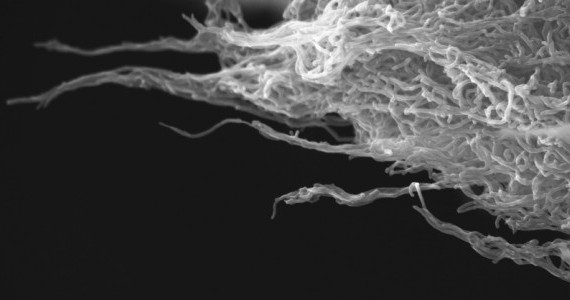Overview

Introduction
For instance, some of the particles we study such as Carbon Nanotubes (CNTs) can have diameters of less than 1 nm, this is roughly 100.000 times smaller than a human hair. At the same time these tubes can reach very long lengths, up to more than half a meter (more info). This is a typical example of a one dimensional (1D) nanoparticle because it extends in one dimension, in contrast 2D materials such as graphene are essentially only one atom thick, but can extend in two lateral directions. Finally, 0D nanoparticles are typically more or less spherically shaped nanoscale material "dots", a well-known example of these are C60 "Bucky balls".
In my research, we seek new fabrication methods for organizing these nanoparticles into 3D superstructures consisting of well-organized nanoparticles. For this, we study the interactions between the nanoparticles as well as methods for packing and organising them into well-defined structures. We mainly use carbon nanoparticles as a structural backbone, but hybrid and other particles are being developed as well.
IfM Review
 Small but mighty: the manufacturing challenges of nanotechnology. Head of NanoManufacturing at the IfM, Dr Michaël de Volder explains why manufacturing carbon nanotubes is so difficult – and so important.
Small but mighty: the manufacturing challenges of nanotechnology. Head of NanoManufacturing at the IfM, Dr Michaël de Volder explains why manufacturing carbon nanotubes is so difficult – and so important.
More information
If you are interested in specific research activities, please visit our website, read our publications, or simply have a look at some of the stunning images that were produced during our research. We are also constantly seeking new skilled researchers, whom we encourage to look at our jobs page.









